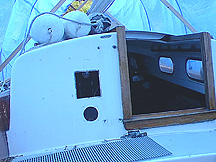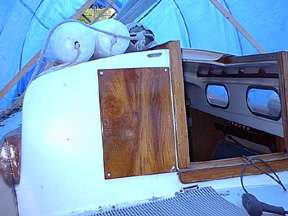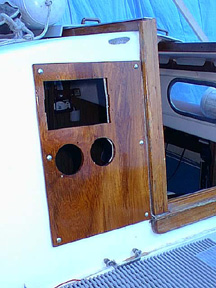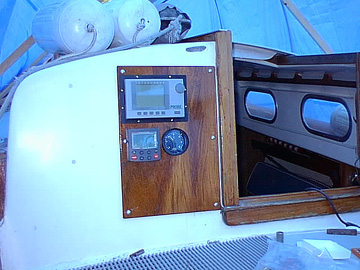
 With the instruments removed, there are some pretty large holes to fill...
With the instruments removed, there are some pretty large holes to fill...


The cabin bulkhead, for those of you contemplating similar projects, is composed of two layers. The outer layer is solid glass, approximatley 1/4-inch thick. The inner layer is a cabin liner, also make of fiberglass, and is approximately 3/16-inch thick. On my boat, some pieces of wood had been wedged in between the two layers to provide something into which to thread the screws used to mount the old instruments. These blocks were removed so as to make the interior layer of fiberglass as flat as possible. This should make it a bit simpler to build a cover to hide the back sides of the instruments.

In the works is a cover to help protect the new depth sounder from sunlight and stray birds. Also coming is a cover for the interior. This cover will be used to (a) hide the wiring, and (b) support various switches for power and lighting used in the various display heads.
Stay tuned for these improvements!